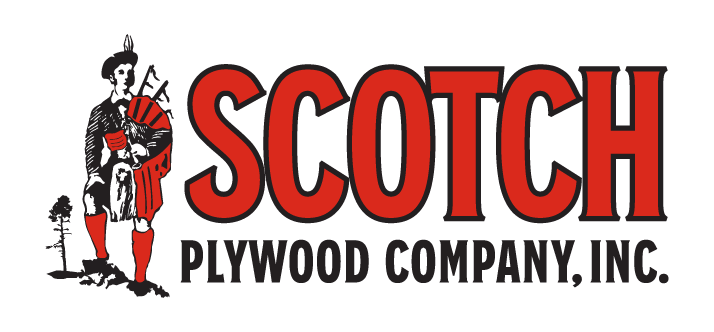History
From the very beginning in 1888, Scotch has remained dedicated in our role as a local employer, economic stimulator, and community supporter in the towns and communities where we operate. by establishing deep roots in the heart of ALabama’s pine belt, Scotch has been growing timber, producing quality forest products, and building relationships for decades.
Scotch Lumber Company
On November 22, 1888, the mill officially began as a partnership between Marcus B. Behrman and Joseph Zimmerman, who had acquired eight acres of land and a total of $3,850.00 each in either cash or real property to form the Virgin Pine Lumber Company. The company started operating at a crossing on the new Mobile and Birmingham Railroad known as Wade’s Station, so named for a local family. In 1889, not only was the name of the community changed to Behrman, but the Virgin Pine Lumber Company was sold to a Canadian.
In 1892, he took on a fellow Canadian as a partner and the two men changed the name from the Virgin Pine Lumber Company to a name in honor of the men’s Scottish ancestry. Thus, the name by which the company used to be known by — Scotch Lumber Company — was established. Once again, ownership of the lumber company changed hands in 1896 as a group of New York investors purchased the business. A tradition had been established in the past: when a change in ownership of the company occurred, a new postmaster was appointed. When Mr. George R. Hannon became the new postmaster, he also changed the town name to his old hometown of Fulton, New York; so Fulton, Alabama, has remained the name until today.
On March 5, 1902, W. D. Harrigan Sr. of Rhinelander, Wisconsin and Fredrick Herrick of Lac Du Flambeau, Wisconsin, purchased the Scotch Lumber Company. Following tradition, Harrigan became the postmaster as well as secretary-treasurer of the company. He moved the post office into the company’s commissary so employees could operate it under his direction. Herrick was named President and a friend of his, named Marvin Hughitt, became Vice-President. This commissary used brass tokens and paper coupons.
Mr. Harrigan wanted the employees of this company to be prosperous, but also enjoy as many conveniences as possible. He built the first good road to Grove Hill, as it was the county seat, donated steel to construct a bridge over Bassett’s Creek, established station telephone service, and installed a water pump house and well, in addition to rental homes. He also constructed a commissary full of groceries and supplies, the county’s first four-hole golf course and swimming hole, and the first motion picture theater in Clarke County. Upon an annual return from the North, Mr. Harrigan brought the town’s first automobile back to Fulton.
The Legacy of W. D. Harrigan, Sr.
On January 16, 1919, Mr. W. D. Harrigan Sr. died at the age of 56. He was greatly missed by not only family members but by friends and employees, for he was a kind man who loved the poor and wealthy alike. With his foresight, good business judgment, organization, and management, Scotch Lumber Company continued to grow and expand into one of the South’s most modern plants. The legacy he left is carried on today by his descendants.
Scotch Plywood Company, formed in 1965, was the first plywood mill built east of the Mississippi River. In 1969, a pine veneer mill was built in Waynesboro, Mississippi, and the veneer mill in Beatrice, Alabama, began production in 1978.
This brief historical summary was researched and prepared by Paige Reeves and Virginia S. Harrigan in 1988 and condensed by Billy J. Wood in 1991.
Scotch Plywood Company
Around the turn of the 20th century, the softwood plywood industry got its start in the Pacific Northwest. It wasn’t until 1964 that the first plywood mill began operation in the Southeastern United States using the vast Southern pine forest. The “Scotch” family saw the future.
Later that same year, the third generation of “Scotch” ownership, the Harrigan and O’Melia families, began construction of a plywood mill just North of the Scotch Lumber Company mill in Fulton, Alabama. They produced the first plywood panel East of the Mississippi River in August of 1965. The original mill capacity was 50 million feet per year, serviced by a single dryer.
As demand increased for plywood, they expanded their timber procurement area by constructing a veneer mill with a log yard 60 miles West in Waynesboro, Mississippi, in 1969. To handle the additional veneer capacity, a second dryer was built at the Fulton mill in 1970.
In 1979, as demand continued to increase for plywood, Scotch looked East to expand. A veneer mill with a log yard and dryer came online in Beatrice, Alabama, approximately 60 miles from the Fulton plywood mill.
Scotch Plywood Company, Inc. continues to reinvest in its personnel and manufacturing operations. This has enabled us to obtain a production level over six times greater than our original capacity. Changes continue to occur in the industry today, and we continue to produce quality plywood, the “original engineered wood product.”
Scotch Land Management, LLC
By the 1970s, Scotch had developed a deep and diverse forestry staff to manage timberlands owned by the Harrigan descendants. They saw an opportunity to offer the same professional services they employed on their timberlands to the general public in Southwest Alabama and Southeast Mississippi.
Over the next four decades, Scotch began bringing local acreage under management for clients ranging from local landowners with an interest in maximizing their financial return to managed trusts controlled by financial institutions. In 2010, Scotch Land Management, LLC was officially formed as a separate company with approximately 500,000 acres under management.
Trained professional staff, the latest in technology/equipment, and being a part of organizations such as the NC State Tree Improvement Program and the Auburn Forest Health Co-Op, allows Scotch Land Management to provide the very best land management practices for our clients.
Through the efforts of our forestry professionals, Scotch remains dedicated to the growth of the timber resources under our stewardship through good times and bad times. We understand the long-term commitment and work it takes to manage a forest from seedlings to saw logs.

